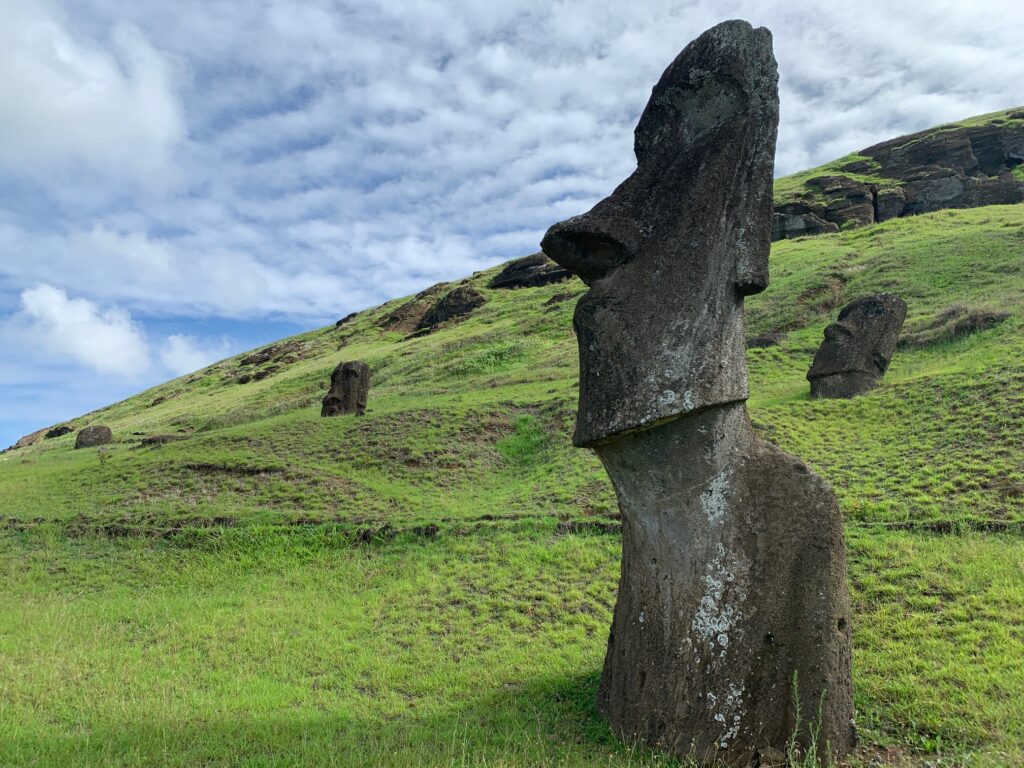Moais at the Rano Raraku quarry site
Highlights
- Required entry documents
- Flight to Easter Island
- Exploring the Island
- Not all guides are equal
- Tapati Festival
- Cash or Credit Card
- Where to Go
- Where to Stay
- When to Go
- Transportation
Time of Visit: February 2023 (during the Tapati festival)
Duration of Visit: Six nights
Description


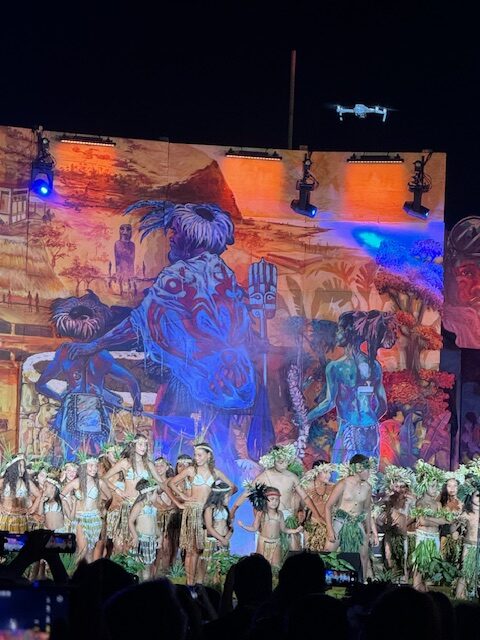

There are only a few iconic places on earth that are readily recognizable by a majority of people. Easter Island or Rapa Nui in the local language is one of them. This tiny Polynesian volcanic island in the Pacific Ocean is made famous because of the moais and the mystery attached to it.
Moais are large monolithic statues that have been carved from the side of the mountain and transported to various locations throughout the island. How these gigantic and heavy structures were transported to its final resting place is still a mystery.
The Rapa Nui people host the Tapati festival as a way to showcase and share their culture with the outside world. The festival consists of numerous competitions from dancing, to poetry recitals to racing and singing. The festival is a way of maintaining the Rapa Nui culture amongst the islanders, particularly in generating interest and a sense of identity amongst the children. Indeed, it seemed like everybody on the island, young and old, participated in the Tapati.
Here we describe our Easter Island experience and provide helpful and useful information in planning your trip to this magical Polynesian island.
Entry Documents


Entry to Easter Island is like entering Chile again even though visitors fly out of the country’s domestic terminal. Visitors have to go through the designated Easter Island security gate located on the second floor between Santiago Airport’s arrival floor and the airline check-in floor. The designated security gate has the PDI (Policía de Investigaciones) booths similar to the booths that visitors have to pass through when first entering Chile. So if you get dropped off at the airline check-in floor, just go down one level to find the designated Easter Island security gate.
The PDI officer will look for the following documents before issuing stamped paper ticket for boarding:
– Completed on-line Easter Island entry form
– Accommodation information on the island
Our Easter Island host sent us the link to complete the on-line entry form. We made our island accommodation arrangement through Booking.com. We just asked our hotel front desk at Santiago to print the two documents for us.
The PDI officer looked at both documents, our boarding pass and passports before handing us a stamped paper ticket. This paper ticket was then collected by another PDI officer at the boarding gate before we were allowed to board the plane.
Flight
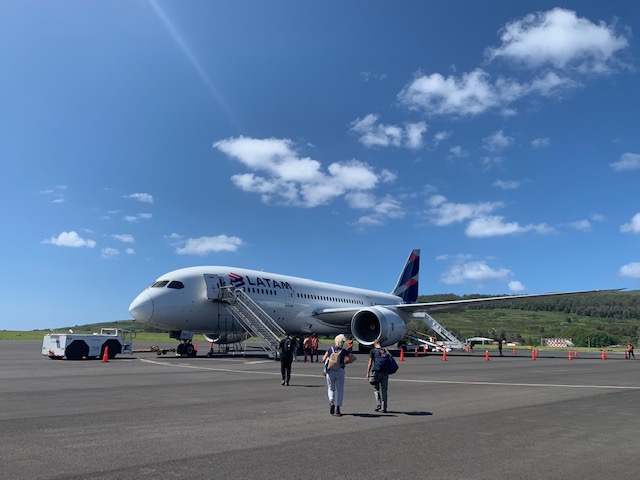

We flew on LATAM airlines. The plane was a trans-continental size aircraft having 3x3x3 seats per row. It took around five hours to fly from Santiago to Easter Island. Easter Island is also a couple of hours behind Santiago.
The flight leaves at 7 AM and arrives at around 10 AM local time. The return flight to Santiago is faster. The same plane makes the return flight, leaving around close to 1 PM and arriving in Santiago in the evening past 7 PM.
Exploring the Island
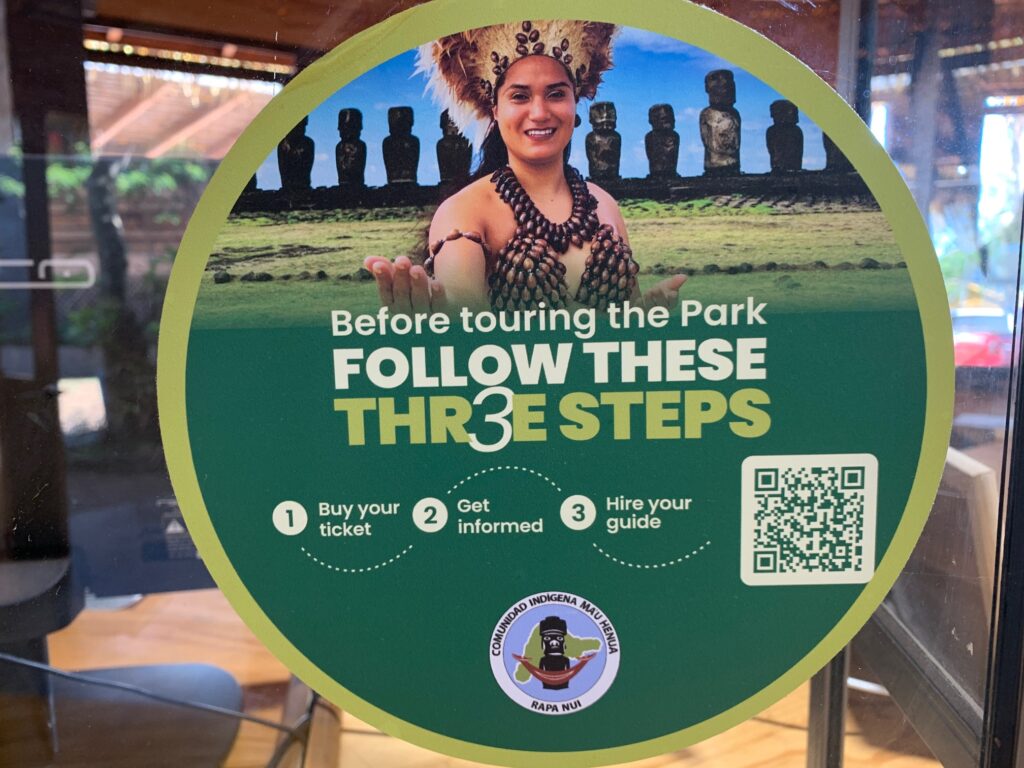

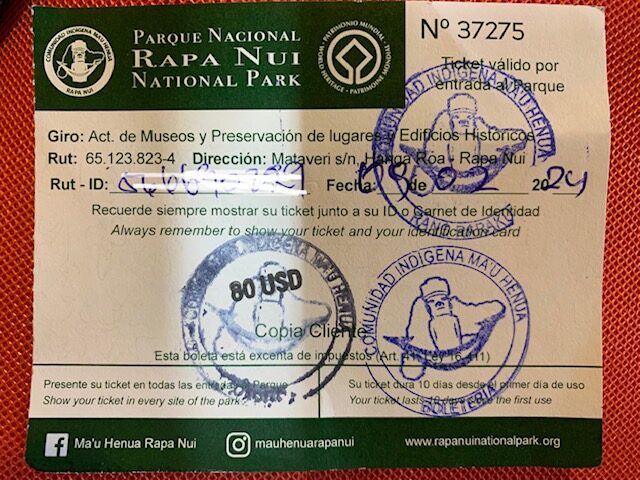

Visitors can freely go around the island. However, visitors need to purchase the Parque Nacional Rapa Nui pass and be accompanied by a local guide to enter the archeological sites. The two most impressive collections of standing moais are located within archeological sites. There are several archeological sites scattered throughout the island.
Purchasing the Parque Nacional Rapa Nui Pass
Chile national parks are run by Corporacion Nacional Forestal (CONAF). The CONAF Parque Nacional ticket office in Easter Island is located in the town of Hanga Roa (the only town in the island). It is at the northwest corner of Tu’u Maheke and Atamu Tekena streets, almost across the pharmacy.
The ticket costs 72K CLP per person at the time of our visit. We were issued a ticket and were told we must bring the ticket with us anytime we visit an attraction that requires a guide.
The ticket allowed us unlimited visits to the attractions except for Orongo and Rano Raraku which visitors are only allowed to visit once (more later about archeological sites).
Guides
The archeological sites are scattered throughout the island. Visitors are required to be accompanied by a guide to see most of the archeological sites. There are only two, Tahai and Anakena that do not require a guide nor the park ticket.
The guide is there for three reasons. First, Rapa Nui people are proud about their heritage. They want visitors to be educated about its history and how their ancestors lived. The guide provides that information as they explain the history about the ruins.
Second, the guide serves as the watchdog. They make sure that visitors do not wander around and go to places that are off limits or touch something that should not be touched.
Last, it provides some livelihood for the local people.
Not All Guides are Equal
Our host provided us with contact information of a couple of guides. We posed our questions to the guides through WhatsUp before deciding on one. One guide quoted us 200K CLP per person for two days of touring while another quoted us 100K CLP per person for a day and half. We settled on the guide with the cheaper quote and she sent us the sites we would visit.
In hindsight, we should have waited on deciding on a guide until we got on the island so we could get familiar with the sites we wanted to see. One of our goals was to see all the standing moai. To make the long story short, we did not get to visit Ahu Akivi which has seven standing moais and the information that our guide conveyed during the tour seemed insufficient.
We surmised the second part because there was another guide with a larger group (more than 10 people) that was presenting a lot more information than our guide. Granted, our guide was young and the other guide was a bit older. Also, the other guide had an English only tour while our group of six had four Spanish speaking people and us. So our guide had to say the information twice, once in Spanish and again in English.
Perhaps the two questions we should have asked our guide back before booking were “how long have you been guiding?” and “do you have an English only tour?”.
Tapati (Festival)
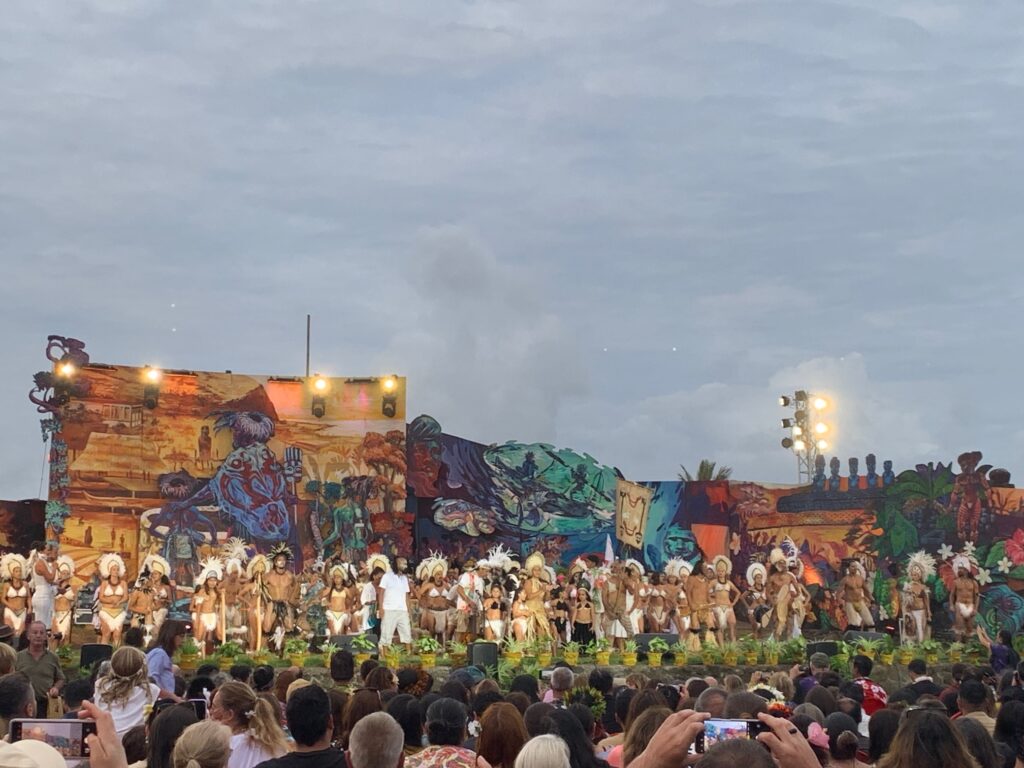

Easter Island has an annual festival held in February. The festival lasted 10 days in 2024 (our guide said the festival duration varies year to year). There are different cultural events held throughout the day and night.
We wanted to see the moais and the festival. Unfortunately, we could not do both at the same time. Conveniently, our accommodation host sent us the festival program outlining the events and time occurring each day. This helped us decide the days to do the tour without missing on the festival events we wanted to see.
Cash or Credit Card
You can do both. Restaurants and small mom and pop mini markets accept credit cards. We noticed that some establishments add a small fee (around 350 CLP) when we paid by credit card. Most restaurants also add a 10% gratuity to the bill (just look at bill details carefully to make sure you do not tip twice).
CONAF also accepts credit card payments. However, credit card readers can malfunction or the network could be down so you may need to bring cash also. There are ATMs at the city center in case you fall short on cash.
Our accommodation and guides only accepted cash so we had to bring the funds with us to the island.
Where to Go
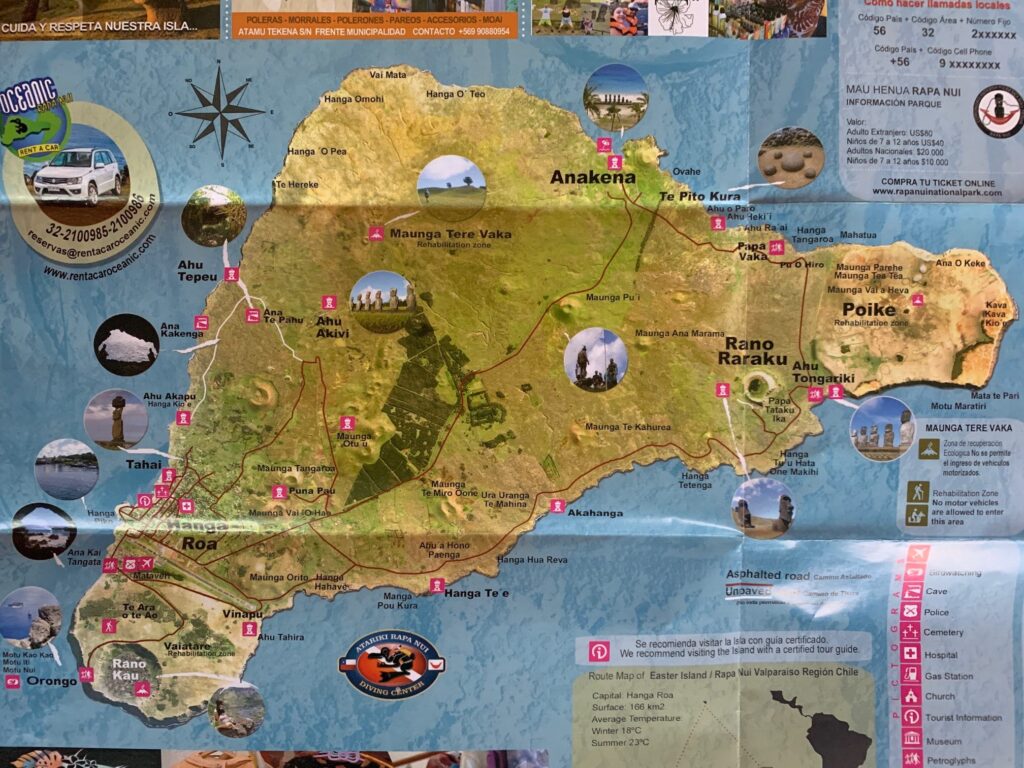

Our primary goal of visiting Easter Island was to see the moais. Experiencing Tapati was a secondary goal. It turned out that both were equally fulfilling.
There are five sites that have standing moais. These are Tahai, Rano Raraku, Tongariki, Anakena and Ahu Akivi. The moais are viewed from a distance, some closer than others. There are other archeological sites but they are more ruins (stack of rocks) and do not have standing moais. None of the archeological remains can be touched.




Tahai is walking distance from the Hanga Roa town center. It does not require a guide or a park ticket to enter. Visitors go there for the sunset. The yellow to orange horizon color contrasts nicely with the standing stones.
Rano Raraku is the quarry site. The pictures that appear on magazine covers showing a moai head sticking out of the ground is in Rano Raraku. There are a lot of moai that are both standing and on the ground. There are also moais that were in the process of being carved out of the mountain side before moai creation came to a grinding halt. The largest moai at 21 meters is located here, albeit it is not finished.
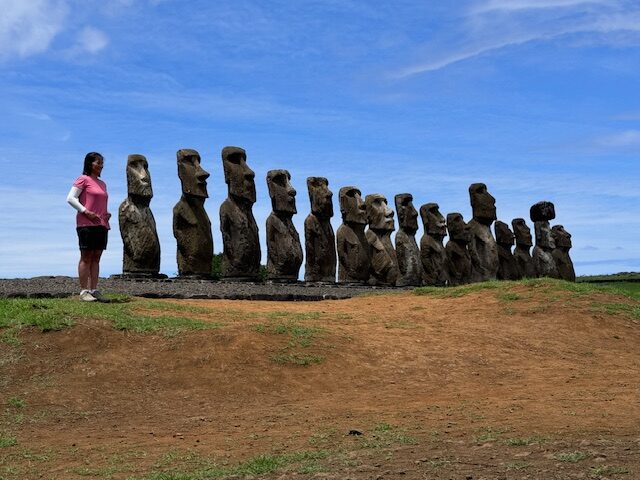



Tongariki is the site with the 15 standing moais that are lined up side by side. They are the tallest standing. These moais were toppled by a strong tsunami and were re-erected. There is also a lone moai standing near the entrance. This moai was used to demonstrate the “walking” transportation method that was proven by the archeologists. Tongariki is a popular sunrise destination during the summer as the stone statues’ backs directly face east.
Anakena has four standing moais with hats and two that are headless. The moais here represent the royal family according to our guide. The largest sandy beach on the island is located here. There are palm trees and a couple of restaurants. It is free to see the moais.
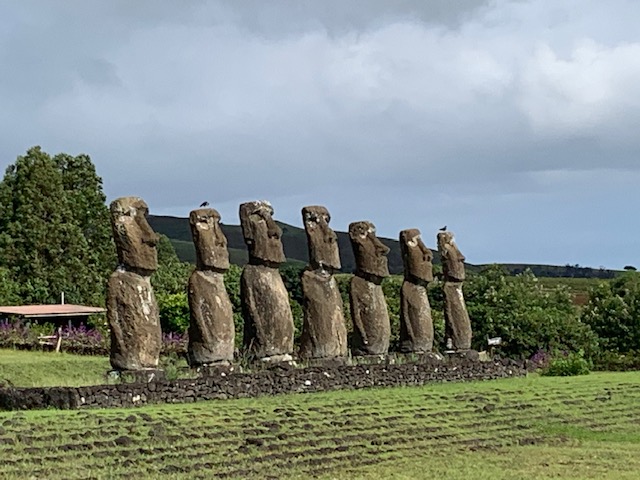



Ahu Akivi has seven standing moais. It is located about five kilometers from the main road through the combination of dirt and asphalt road that is very passable by car. We did not get any history about these moais because we were accompanied by a non-English speaking teenager on horseback, i.e. not a professional guide.
Another place that is worth seeing and does not require a guide is Rano Kau which is a volcanic crater. It is essentially one huge hole in the ground.
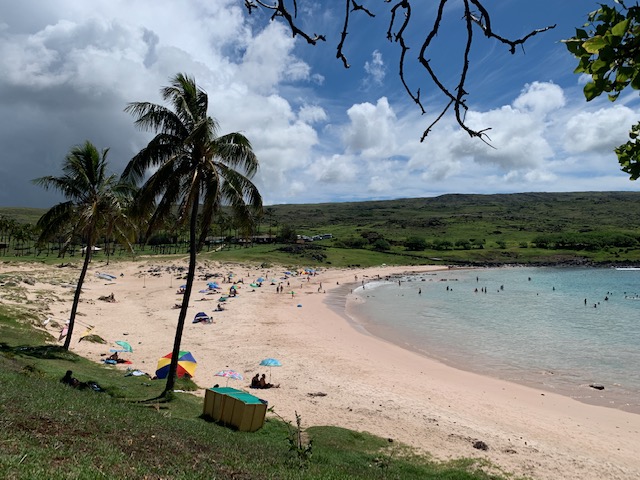



Not far from Anakena is Ovahe which is a cove with a short sandy beach area. The water here has docile waves unlike most of the island that has crashing waves. The parking lot is about half a kilometer from the main road and it is rutted in some places. Then it is about another half kilometer of walking over rocks to get to the beach. The nice thing about this beach is that the cliff behind the beach provides a natural shade in the afternoon. We liked this beach better than Ovahu as the water was calmer and less people.
Where to Stay
Stay near the city center if you did not rent any mode of transportation. The city center is close to the ocean and there are shops and restaurants around. Dive shops are also located here as well as the early morning produce market that temporarily pops up on the street. There is also a designated swimming area and large turtles frequent the bay.
The only drawback of staying near the city center during the Tapati festival is that the evening programs finish sometime around 2 AM. The festival had huge speakers and we could hear the music from our accommodation which was a 20 minute walk away.
Being an island, everything slopes down towards the coast. So the further inland your accommodation is, the longer the walk and the return walk would be uphill. Thankfully, Hanga Roa’s terrain is not terribly steep. However, given the humidity and warm temperature during the summer, we just stayed in our accommodation during the middle of the day (when we were not touring) as it was very uncomfortable to walk around under the scorching sun and miserable humidity.
When to Go
The island has two seasons, warm and humid and not so warm and humid. Warm and humid happens around summer from December to February. The sun can be punishing at times, especially during the middle of the day. The nights cool off though but not significantly such you would still need to run a fan in the room to stay comfortable. Having air conditioned accommodation would be preferred when you visit during the summer.
March through June becomes less warm and windier. Less people visit the island too according to our guide. July through September comes the rain. Our guide said that it is their time to go on vacation and they leave the island.
Even though it is warm and humid in February, there is no substitute to experiencing the local culture during the Tapati festival.
Transportation
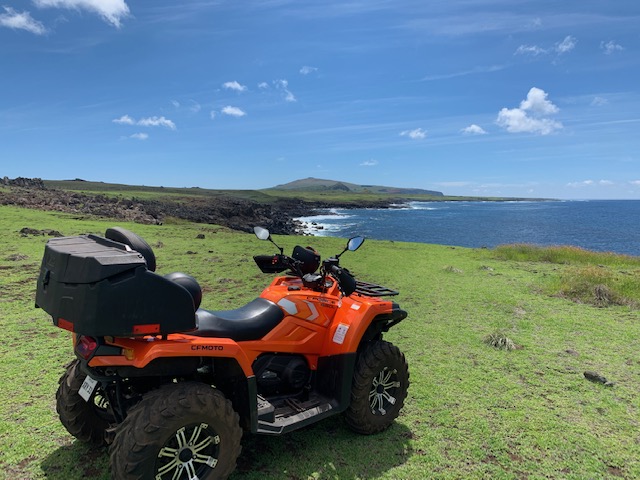

According to our host, there are no public buses on the island. There are taxis if you are lucky to see one drive by as there are no designated taxi stands.
You can rent a car if you plan to do explorations on your own. Renting a scooter or motorcycle would be a convenient way to get around town. It is easy to park and heavy traffic does not really exist on the island. However, the seat will heat up quickly if exposed to the baking sun. Still, motorcycles and scooters beat walking in the middle of the day.
We rented an ATV and it was an OK experience though there was really no need for its 4×4 capability. Plus ATVs do not go as fast as scooters or motorcycles (top speed of about 50 mph).
Summary
Easter Island or Rapa Nui, famous for the moai, is one of those bucket list destinations. There are five standing moai archeological sites which are Tahai, Rano Raraku, Tongariki, Anakena and Ahu Akivi.
Tahai is near the town of Hanga Roa and is the place to be for sunsets. Rano Raraku is the moai quarry site and contains the most number of moai. This is the moai location that appears on most magazine covers. Tongariki is the place for summer sunrise as the 15 standing moais line up to the east. Anakena has standing moais, four with hats and four incomplete. Finally, Ahu Akivi has seven standing moais and is the only site that is inland.
Only Tahai and Anakena do not require a Parque Nacional Rapa Nui pass and guide to visit. Visitors are required to have both to visit the rest of the archeological sites. Hiring a tour can be tricky for first time visitors as there are several tours to choose from. Plus not all guides are equal when it comes to knowledge and being able to convey that knowledge in English. If we were going to do it over again, we would hire a tour after arriving on the island so we could have a chance to familiarize ourselves with the sites we want to visit and look for a corresponding tour that goes to those sites.
Rapa Nui people are proud of their heritage and history. Young and old celebrate it by holding the Tapati once a year. After experiencing the Tapati, we felt as if the entire island participated in it. It has a very festive atmosphere, especially during the evening program.
Overall, whether it is the moais or the festival you come to see in Rapa Nui, there is no other place on earth where you get to experience both.

